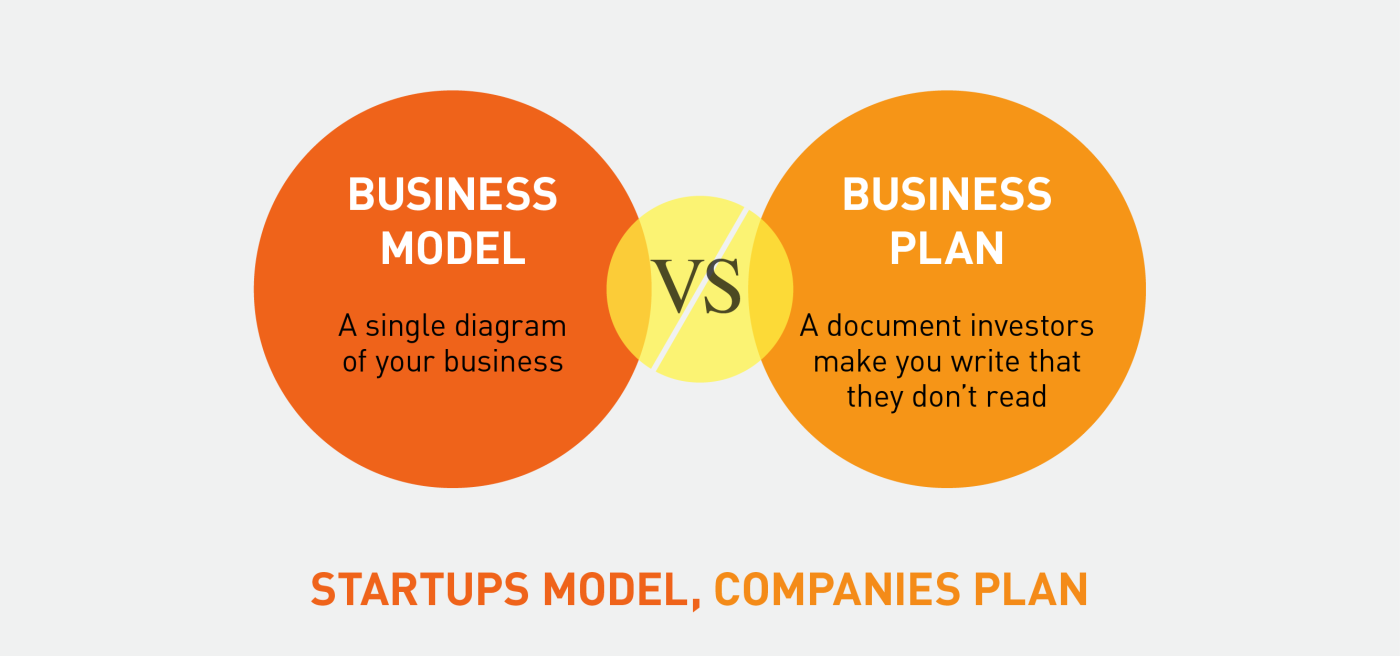Why do startups present their business plans when asked about their business models? Is there a difference between the business plan and the business model? Can they have a business plan without understanding their business model? Enough asked!!! Now, what is a Business Model?
Business model is very simply the method by which a business makes profits!
Very often we come across the phrases “Is there a business model?”, “But what’s the business model?” or “What is innovative in that business model?”!
Are we sure we fully understand these questions? More so do we fully grasp the answers?
Now we all know enough and more about how buildings are built. Before the construction of a building, especially one that has new (innovative) aspects in its layout, appearance, elevation, structure etc. it is a very common practice for the architect to create a miniature table‐top model using cardboard or plastic or metal. The promoter or the builder uses this model to approve the design after several rounds of minor or major changes. Using this model, the architect validates if the building design, aesthetics and other aspects are in alignment with the builder or the promoter. In addition but more specifically the model helps scope more completely all costs to be incurred and whether such a building is viable if used for commercial purposes or is affordable for a residential consumer. Once the design is approved the architect then translates the model into a detailed blue‐print that serves as the basis for planning the construction of the building. Upon approval of the blueprint and the construction plan (what is referred to as the project plan), the construction engineers and contractors of various kinds go about executing the plan, under the watchful eye of the architect.
In every business too just as with every building there is (there better be!) such a model – the business model.
But what is a business model? Very simply put it is but the method or the approach or how the business goes about making profits by selling a product or service in a market. More rigorously, how the business gets revenues that are in excess of the costs incurred to earn (achieve or make) those revenues, thereby creating profits for the entrepreneur or the business owner.
A business model primarily indicates if (and also how) the business is viable and is profitable, and in some cases if it is scalable.
Firstly, when do we say a business is viable?
A business is viable if it achieves a certain minimum number of sales transactions i.e. customer orders (the number and the time in which it is achieved both matter), and thereby achieves that most important first milestone in its lifecycle, ‘repeatable revenues’. Repeatable Revenues prove that the following key assumptions that underlie a business model are validated:
– The business shall solve a real need that customers have; (Problem statement)
– The business shall identify and reach its most potential customers; (Target Customer)
– The business shall generate the demand from within its target customers; (Market size/share)
– The business shall offer this/these benefits to its target customers; (Value Proposition)
– The business shall sell its product or service at this price; (Price/Revenue model)
– The business shall compete with these market alternatives; (Competition)
These 6 most essential elements of any business combine to give the business it’s much needed viability.
Secondly, when do we say a business is profitable?
Well this is easy! Of course when it makes profits! Duh! But the larger question here is if these profits are stable and predictable. In the first level what matters is if the business is able to make a profit margin in every sale of its product or service (a blog on Unit Economics will come soon!). At the second level and what matters most is if the business is able to generate sustained aggregate profits (called Operating Profits) on a monthly, quarterly or annual basis.
Thirdly, when do we say a business is scalable?
Alright! Now what is scalable? A business that can grow bigger is scalable. But grow what bigger? The revenues, the market share, the number of employees, the profits, the market capitalization, now which one. Actually a business grows if it grows any or all of these but the most important form of growth is increasing the profit of the business sequentially – ideally the growth in all of these parameters must be aimed at continuously increasing the profits of the business. Growth in the percentage profits (profitability) of the business is the sole purpose for scaling any business.
Now if the building is exactly the same as several buildings previously designed by the architect and built by the construction company, then it does not require a miniature table‐top model. The architect would directly develop the blueprint and the construction company would develop an elaborate project plan with details on the costs, the materials, the milestones, and the final date of completion. The promoter or the builder when given with the blueprint and the project plan can take confidence in the fact that the plan does not have any risks or uncertainties in the planning process. That is all assumptions regarding the design, the materials, the costs, the manpower estimates, the structural metrics, the dimensions etc. made as part of the planning process are quite surely validated. And this is because the building is exactly same as several buildings built in the past.
There is no ‘model risk’ – no risk with the building model. However there is ‘execution risk’ – risk in the assumption that the project plan will be executed accurately, effectively and efficiently as per the plan.
Much like buildings, businesses too have no model risk if they are based on a proven business model. The business model has been proven viable already, and the business owner or the entrepreneur can now develop a business plan and directly execute the plan (hopefully efficiently) towards achieving aggregate profits in a sustained (stable and predictable) manner.
Once the viability is proven and profitability looks achievable (if not proven but there seem to emerge a clear path towards achieving aggregate profit), we say the phrase, ‘Yes the business has a business model’. Viability of a business model proven through ‘repeatable revenues’ and profitability of a business model proven through achieving ‘aggregate profits’ in a sustained manner are two most critical milestones in the lifecycle of a business.
Unless the business model is proven to be viable, then the business plan ‐ that calls for significant investments towards achieving profits and business growth, is full of model‐risks and is therefore least attractive to investors or to banks. But conversely this very presence of model risks in new or innovative business models attracts angel investors and venture capital investors, who see this as an opportunity to create a disruptive, non‐linearly scalable business – the ultimate startup.
Just as the architect creates a table‐top model to visualize the proposed building model, an entrepreneur too has to visualize the business model in a manner that makes it easier to explain to a potential investor or to the bank or to the first hires into that business etc. The amazing tool called the Business Model Canvas makes this task of the entrepreneur ridiculously easy. At its best the BMC is used as a strategy tool.
Only a building that has innovative features or design requires a miniature table‐top model to be approved before the blueprint and the project plan are developed, approved, budgeted and executed. Similarly for a business that is attempting an innovative business model, which when compared with conventional business models in the sector or market has changes in the business model ranging from the very incremental to the very radical, it is important to prove its viability first.
In such cases, the first phase of exploration is aimed at building a ‘Minimum Viable Business’ (MVB) – is a business operated at a minimum scope and size wherein it is reasonable (based on facts & data) to conclude that the key assumptions underlying the new (innovative) business model are proven beyond doubt. This business operates production, marketing, sales etc. at a minimum scale and having been able to generate and fulfil a minimum number of customer orders, thereby generating revenues within a short time period and with less cash (investment).
Generally why startups fail is because they assume their business model is viable and therefore directly develop and execute a business plan to launch and operate a business at a much higher scale aimed at generating higher revenues and at making profits. Usually this leads to escalating costs that are never matched with revenues and that is because the many assumptions made in the business plan play out differently in real life. Although through this failure the Startup has learned enormously through market feedback and response it is however left only with very little or no cash do play a second inning where it brings significant changes to its business model. Also the founders have experienced stress, crash and burn leaving very little in the tank to run it again.
Startups are better off running a frugal and minimal business where the goal is to make failures and learn quickly, and keep moving forward incrementally towards building their MVB.
Author: Vishwanath Sahasranamam


Leave a comment